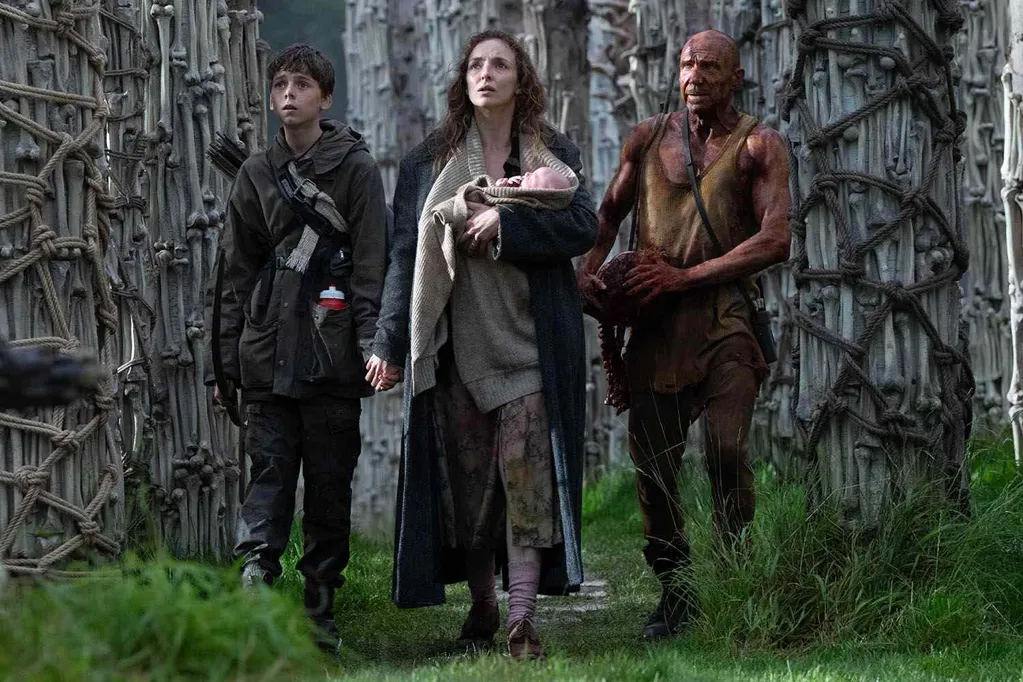28 Years Later, which premiered on June 20, picks up 28 years after the rage-inducing virus first caused havoc on the world.
After nearly 20 years, the third installment from the 28 Days Later franchise, 28 Years Later, is finally coming to theaters. The movie, which premiered on June 20, picks up 28 years after the rage-inducing virus escaped a biological weapons laboratory and nearly destroyed everything.
The sequel follows a group of people who survived the virus and moved to a quarantined island off the coast of Britain. However, the island's peace gets uprooted after someone leaves the protected area and "discovers secrets, wonders and horrors that have mutated not only the infected but other survivors as well," according to the film's synopsis.
In the first movie, director Danny Boyle purposely used a camcorder that reflected that time period to make the footage feel more realistic and like a documentary. When it came to the third film, Boyle wanted to remain consistent, so he and cinematographer Anthony Dod Mantle filmed with several iPhones rather than traditional high-tech cameras.
"It's very light, it's cheap, and it allowed us to go to places that were very remote and bore very little evidence of human presence for many, many, many years," Boyle told IndieWire in June 2025.
In addition to using up to 20 iPhones at the same time, he also utilized drones and Panasonic cameras, as well.
Here's everything to know about why and how 28 Years Later was filmed on an iPhone.
One of the reasons 28 Days Later became such a hit when it premiered in 2002 was because Boyle purposely used a camera that was of the times. When he filmed the first movie, Boyle used eight Canon XL-1 digital cameras and became one of the first directors to shoot a movie in the documentary style, according to Wired.
"I was shocked how violent it was, and I was very proud of how visceral it was, and I thought, 'Yeah, we did the right thing,' " Boyle told IndieWire of the first film. "Using those cameras that we did, I felt very liberated by using them for that kind of story because it wasn't trying to mimic big, American action movies, and yet it turned out to appeal to big American action movie fans."
When it came to making the third installment, Boyle knew that he wanted to maintain that same realistic sense, but the digital cameras he previously used were too outdated so he went with today's version of an everyday digital camera -- an iPhone.
"I was very proud of that, and I wanted some of this to have an element of that again, but it would be obtuse to use that low grade of technology now when 4K is available on all our phones," he explained to the outlet. "You only have to switch it on in your settings, and you can have cinema-quality recordings. So, we wanted to use that technology."
In addition to the artistic element of using iPhones, Boyle explained that it was also a more realistic choice. They filmed in extremely rural parts of England and Scotland, so it was important for them to travel light.
"It is a huge advantage because it allowed us to do these rigs that they've now released footage of. It was lovely to be able to use that, and it's flexible; it's a poor man's bullet time," he explained. "It's basically The Matrix rig but flexible and portable; you can park it in different places. It's an easy technology to switch on. It's a bit of a nightmare for syncing and all that kind of stuff in post,but it's a beautiful thing to use."
While a majority of the film was shot with iPhones, the film's crew purposely used several at a time at various angles to capture many shots simultaneously. Boyle told IGN that he and Mantle assembled custom rigs to hold several iPhones at once.
"As it's a horror movie, we use it for the violent scenes to emphasize their impact," Boyle explained.
One of the rigs held eight iPhones at a time, while a second held 10 and a third 20.
"One for eight cameras, which can be carried very easily by one person; one for 10 cameras; and one for 20," Boyle explained of the rigs. "I never say this,but there is an incredible shot in the second half [of the film] where we use the 20-rig camera,and you'll know it when you see it ...It's quite graphic but it's a wonderful shot that uses that technique,in a startling way that kind of kicks you into a new world rather than thinking you've seen it before."
The 28 Years Later film crew used various iPhone 15 Pro and iPhone 15 Pro Maxes, according to Wired. The devices can "shoot Apple ProRes video in log color profile at 4K resolution," per the outlet.
The iPhone's advanced camera let filmmakers capture high-resolution photos and footage with high contrast and shadows. Although the device's cameras have developed over the years, the filmmakers most likely still used video software to enhance the images.
While Boyle purposely used iPhone cameras to give off a more authentic appearance, he and the crew used other cameras, as well. The director clarified to IndieWire that in addition to utilizing several iPhones, they also used "lots of different cameras."
"Sony are desperate for us to say,'Don't let everybody say it's just shot on the iPhone,'" Boyle told the outlet."It isn't just shot on the iPhone,but it is a huge advantage."
28 Years Later premiered in theaters on June 20, 2025. It is also available for preorder on Apple TV+.
